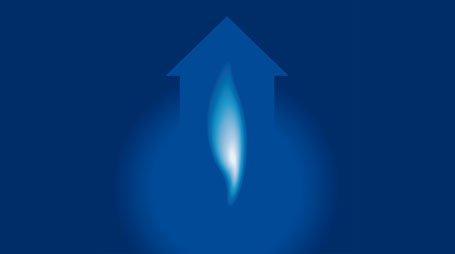Gas Central
Ducted central heating is one of the oldest forms of heating in the world, originally developed by the roman empire.
It is simply the method of diverting the heat from a source to areas that need to be heated.
Today, the ducts are generally pre-insulated tubes that run like veins and arteries from the heating system to supply grilles in each area to be heated. The most popular heat source today is a gas furnace that can be installed outside, underneath or in the ceiling of a building. A fan in the heater blows air through ducts to the exit grills.
Natural Gas
Many areas of the Sydney & outer lying regions have natural gas available. Natural gas one of the cheapest way to heat & cool a home / premises. If your home / premises is not currently connected to natural gas, you can contact one of the gas companies to find out if natural gas is available to your home / premises.
Natural Gas is the cleanest burning of all fossil fuels. This means that it is kinder to the environment than other energy sources like coal and oil. Natural Gas has a high energy density allowing it to work harder whilst producing less waste, producing up to 75% less greenhouse gases than electricity. A Natural Gas connection to your house or business is a sure way to reduce your carbon footprint.
LPG Gas
In-Ceiling
Ducted systems can be installed in a suitable ceiling space of a home / premises. A ceiling must have adequate height & accessibility to comply with installation requirements.
In-ceiling ducting delivers heating & cooling to several areas of a home / premises. A suitably designed in-ceiling system is as equally efficient as under floor heating & cooling. A common misconception is that heating from the ceiling is less effective than floor level heating.
Under Floor
Ducted systems can also be installed in a suitable under floor where there is adequate space of a home / premises. The heating unit that supplies the ducting system can be installed under premises or discretely at the side of building.
Under floor systems offer the advantage of easy access to the warm air grills for manual open & closing to control air flow.
Add-on Cooling
If you have an existing or install a new heater & duct system, electric cooling can be incorporated to create a completely integrated heating & cooling system.
The integrated heating & cooling system is controlled by a thermostat & timer. Where specific areas need to be heated or cooled, ‘zones’ can be created to accommodate individual needs & improve efficiency e.g. turn off bedrooms when only the living areas are in use.
An integrated heating & cooling ducted system is ideal for all seasons, is hidden & space saving. An integrated system eliminates the need to have additional separate cooling systems (e.g. air-conditioner, ceiling fans, standard fan etc) taking up valuable space & cluttering up a home or workspace.
The heater can be operated on natural or LPG bottled gas.
The cooling component is electric.
Zoning
Zones can be created to isolate 1 or more areas. Zones can then be turned on or off individually to optimise the running of the system e.g. turning off areas that are not being used such as bedrooms during the day, making the system more energy efficient.
Zones may be controlled manually from switches, time clocks & / or thermostats depending upon the level of control desired.
Zones can also be individually temperature controlled to suit individual needs, keeping everyone happy!!
Multiple Thermostats
A single thermostat is the most common method of controlling a heating & cooling system. However multiple thermostats can be installed to give greater options to personalise the heating & cooling of different zones.
